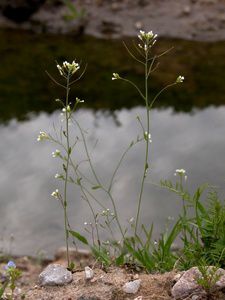-
 Adventitious
Adventitious
-
 Right ascension of a direction
Right ascension of a direction
-
 Boundary area
Boundary area
-
 ISDN
ISDN
-
 Oncotic pressure
Oncotic pressure
-
 Residual error rate
Residual error rate
-
 Abduction
Abduction
-
 Chloasma
Chloasma
-
 Oceanic zone
Oceanic zone
-
 Missile
Missile
-
 Leek
Leek
-
 UMTS
UMTS
-
 Antibiotic for acne
Antibiotic for acne
-
 Crustacean
Crustacean
-
 Alopecia
Alopecia
-
 HSR
HSR
-
 UHF
UHF
-
 Selectron
Selectron
-
 Tulip tree
Tulip tree
-
 Crystal texture
Crystal texture
-
 Private key
Private key
-
 Subcosmopolitan
Subcosmopolitan
-
 Lumbar vertebra
Lumbar vertebra
-
 Chard
Chard
-
 Cephalo
Cephalo
-
 Atom
Atom
-
 OLED
OLED
-
 Cenozoic
Cenozoic
-
 Chemical dam
Chemical dam
-
 Italian alder
Italian alder
Thale cress
The thale cress, or Arabidopsis thaliana, is a model organism studied in biology laboratories.
Thale cress classification
The thale cress is a plant, an eukaryotic organism that belongs to the Brassicaceae family.
Characteristics of the thale cress
The thale cress is a plant that can grow to heights of 20 to 25 centimetres, forming a rose of leaves at its base. It forms white flowers on its stems, which produce siliqua each containing about fifty seeds.
It has a linear double strand DNA genome, of 157 million base pairs shared over five chromosomes (which have been entirely sequenced since 2000). It multiplies relatively quickly, and only takes six to eight weeks to complete a cycle.
Laboratory use of the thale cress
The thale cress is a perfect model organism, since it presents all of the advantages required for laboratory use (small size, quick and numerous multiplication, small genome). This plant can also be easily transformed using of an agrobacteria (Agrobacterium tumefaciens).

Thale cress (Arabidopsis thaliana) is a small plant in the mustard family (Brassicaceae). © Biopix via eol.org, CC by-nc
Latest
Fill out my online form.



